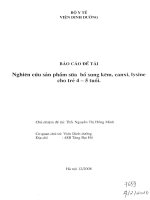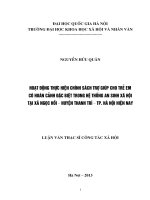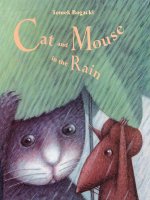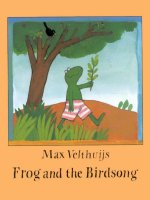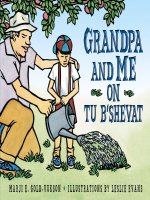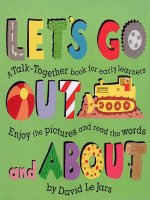Bộ sách “Oxford Read and Discover” cho trẻ em. Clothes then and now L6
Bạn đang xem bản rút gọn của tài liệu. Xem và tải ngay bản đầy đủ của tài liệu tại đây (28.99 MB, 30 trang )
Clothes
ThenandNow
RichardNorthcott
R e a da n d d i sco ve ar tl a b o u tcl o thesin thc r r ,'.r
and clothestoday ...
. Wherewere your clothesmade?
. What is a fashionvictim?
Readanddiscovermoreaboutthe wortd!
provides
readers
Thisseriesof non-fiction
i n t e r e s ti nagn de d u ca ti o n co
a I n tent,with
activitiesandprojectwork.
SeriesEditor:HazetGeatches
r?AudioCDPackavailable
Wordcountfor thls prder: 3,716
Levet3
Level I
600 headwords
900 [te,r,
Level4
750 headwords
/afffi|"u.,,.
,
Coverphotograph:
Gettylmages(Womanin sarifactory/BrunoMor,ilr{lrI
2-03-11
3 2-50
Th,e,llorh,dN;o,w
RichardNorthcott
3
Introduction
1 WhyDoWeWearClothes? 4
8
of Clothes
2 TheHistory
of Clothes L2
3 TheLanguage
16
Clothes
4 Chitdren's
20
5 Fabrics
24
5 TheClothingIndustry
28
7 Fashion
32
8 CrazyCtothes
36
Activities
52
Projects
54
Glossary
56
AboutReadand Discover
OXTORD
UNI\/BRSITY
PRESS
()xF()R.D
l r N t \ ' I R s t l Y I'l
Oxfdrd tlniversily l)ressis a departmentofthe University
ot Oxtord. lt tirnhers the University'sobjectiveofexcellence
in research,scholarship,and education by publishing
worldwide in
Oxford NewYork
Auckland CapeTom Dares Salaam HongKong Karachi
Kuala Lumpur Madrid Melboume Mexico City Nairobi
NewDelhi Shanghai Taipei Toronto
With offices in
Argentina Austria Brazil Chile CzechRepublic France
Greece Cuatemala Hungary Italy Japan Poland Portugal
Singapore South Korea Switzerland Thailand Turkey
Ukraine VietnaD
oxFoRDand oxFoRDENGLISH
are registeredtrade marks
ofOxford University Pressin the UK and in certain other
countrlcs
o Oxford Uuiversity Press2o1o
The moral rights ofthe author have been assefted
Databaseright Oxford University Press(maker)
l'irst published2o1o
2074 2013 2012 2011 2O1O
1098765432
No unauthorized
photocopying
All rights reserved.No part ofthis publication may be
reproduced,stored in a retrieval system,or transmitted,
in any form or by any means,without the prior pemission in
writing of Oxford University Press,or asexpresslypemitted
by law, or under tems agreedwith the appropdate
reprographicsrights organization. Enquiries concerning
reproduction outside the scopeofthe above should be sent to
the ElI Rights Department, Oxford University Press,at
the addressabove
A C K N O WL E D G E M EN TS
llhrstrdttofls
hy:Arlene Adams p.26: Kelly Kennedypp.7, 9, 13,
20:Alan Rowepp.35.38,45, 46.
ThePublisherswould qholike to thank the JollowingJbr their kiwl
pcmission to rcproducephotographsand othercoptright matcrial:
The AdvertisingArchives p.31 (1950sLevi's advert);Akgimages p.9 (spinninglTrod,e,orts ond,rafts in Chind.Spinning
and needlruork.Copper engraving, original colour'.From:
Carl Bertuch, Bilderbuch fuer Kinder, vol.8, Weimar (landesIndustrie- Comptoir) 1813,nL99, fig.4.Coll.Archiv f.Kunst
& Ceschichte):Alamy pp.6 (RosemaryBehar),9 (me Amolfrni
MTfiage (7434lvat EyckrTheLondon Art Archive), 14 (buba/
SELXPaule/hemis.fr),15 (Peru/PaulKingsley),27 (Helen
Rogers),29 (AmandaAhn/dbimages),30 (Martin Thomas
Photography),34 (Coths/Allanhy): Bridgeman Art Library
pp.7 lPortraitofoLody (oil on panel), Donck, Genit van
(161040)/PrivateCollection/PhotoO Bonhams,London,
UK), l7 (lcs Meniaos,detailof thelwer halfdepictingthefamily
of PhilipM (1605-65)
of Spoin,1655 (oil on canvas)(detail of
405) by Velazquez,Diego Rodriguezde Silva y (1599-1660)
Prado,Madrid. Spain/Giraudon),33 (Monstrositiesof
1818,
(w/c)by Cruikshank, Ceorge(1792-1878)ivictoria& Albert
p.10:
Museum,London,UK):The BritishLibraryBoard
Corbis
pp.6 (children/Roben Wallis), 12 (newsreadersljrance/Erik
Robefticorbis Sygma),20 (Hugh Sitton), 21 (PallavaBagla),
24 {MassimoListri).25 (VivianeMoos),28 (FrankCaroll/
Sygma),34 (Harajuku girl/Everett KennedyBrom/epa):
Getty Imagespp.12 (newsreadersMalaysia/tTengku
Bahar/
AFP),22 (silkworms/China Photos),32 (Dominique Chariaq
Wiretmage): W. L. Cnre & Associatesp.23;Vivienne Leep.14
(hanbok);Oxford Uniyersity Presspp.3, 5 (modem clothes),11,
13, l5 (kimono),16, 18, 19, 22 (silkfabdc),31 (jeansclose-up);
PressAssociationImagesp.4 (BelUribe/Landov);ScalaLondon
p.8 (Coptic art: Tuic, 5fh century.New York, Metropolitan
Museum ofArt. Linen, wool, 72 in. high 53.00in. wide (183
cm high 135 cm wide). Gift ofEdward S.Harkness,1926.
Acc.n.: coplright The Metropolitan
Museum ofArt/Art Resource/Scala,
Florence);Scienceand
Societyp.5 (pastclothes/NationalMedia Museum/SSPL).
Theauthor wishesto thonk Ursula Hudson,LondonCoIIegeof Fashion
ilnffi@dseffi@m
Let'sthink aboutclothes.Jeans,T-shirts,dresses,
andsweaters... you canfind theseclothesin most
countriesaroundthe world.Lookat the photosbelow.
Whichclothesarethe sameas clothesin yourcountry?
Whichare different?
You must not circulate this book in any other binding or
cover and you must impose this same condition on any
acquirer
Any websites referred to in this publication are in the
public domain and their addressesare provided by Oxford
University Pressfor information only. Oxford University Press
disclains any responsibility for the content
rsBN:928o 194645614
AnAudio CD Packcontainingthis book and a CD is alsoavailable
r s BN :9 7 8 o 1 9 4 6 4 6 0 17
The CD has a choice ofAnerican and British English
recofdings ofthe cQmpletetext.
Au n( coulpnnying Activity Book is also available
f s r N : 9 7 8 o 1 9 4 6 4 5 7 13
l'r'inle(liD Clrira
Whatclothescanyousee
Whatareyourfavoriteclothes?
Whataretheymadeof andwhereweretheymade?
Whatdo youknowaboutclothesin the past?
'l his lxxrk is prinled on paperftom certifiedand
w('ll-DlrDlgcdsources
moreabout
Nowreadanddiscover
past
andclothestoday!
clothesin the
WhvDo :e
WeamCil@ffies?
We wearclothesbecausewe want to be comfortable.
We wearclothesbecausewe want to look good.Dowe
alwayswearthe samectothes?Of coursenot! We wear
differentclotheswhenwe do differentthings.
Clothes
ForlmportantDays
Clothes
ForEveryDay
Are you wearing your best clothes today?Maybe not.
We wear good clothes at school,but we wear better
clothes at parties or on important days.
In the past, clothes were often big and heavy.The
old clothes above don't look very comfortable. Most
people couldn't buy clothes made of light fabrics, like
silk, becausethey were too expensive.There were no
synthetic fabrics like nylon.
\Teddings are very important days. In this photo of
a wedding, the people are wearing beautiful clothes.
They are made of an expensivefabric called silk.
$Tedding clothes are different in different countries,
but one thing is the same everywhere- people wear
their best clothes on the most important days.
Today, our clothes are light and easyto wear.They
are made quickly in big factories.Millions of clothes
are made every day.Most people have lots of different
clothes becausethey are cheapernow.
Staying
Cool
or Warm
S7ewear clothes
becausewe want to
be comfortable in
hot or cold weather.
In hot weather,tight
clothes are uncomfortable. If we wear loose clothes,
the air can move around our bodies and help us to stay
cool. The men abovelive in a hot country. They are
wearing long, white shirts called dishdashas.
White
clothes are cool in hot weather.The men's turbans
and scarvesprotect their headsfrom the sun.
In colder countries, people also cover their heads.
This is becausethey don't want to lose heat. In places
where the winter is very cold, people wear hats made
of wool or fur. Heat from the bodv stavsin the wool
or fur and keepspeople warm.
I
I
:
b
il
Looking
Good
'That's a greatT:shirt!Wheredid you buy it?' ... We're
alwayshappy when our friends like our clothes.'Welike
wearingnice clothesbecausewe want to look good.
How do we look good?People's
ideas about that have sometimes
changed.About 400 years ago,
people in Europe wore big white
collarsaround their necks.You
can seeone in this painting of a
woman from Holland.
To look good today, men wear ties,
and women wear scarvesor jewelry.
The head and neck have always
been important in the design of
clothes.$(/henwe meet people, we
usually look at the top half of their
body - their face and their eyes.
Some peoplewant to look rich and important.
They buy expensiveclothes made by famous
designers.Presidentsand politicians usually wear
expensiveclothes.
7/ ln AncientChina,yeltowwasthe
emperor's
color.Ontythe emperor
couldwearyetlowclothes.
)
.1s
"
t?i-JL;VI-.?*
W
Goto pages36-37for activities.
ffieffiMffiy
The spinning wheel was
invented about 21500years ago
in India.rVith spinning wheels,
people could make thread
more quickly, so making fabric
was easier.Fabrics became
more comfortable. If you were
rich, you could buy lots of
different clothes.
@ffiCil@Gh@s
Peoplestartedwearingclothesabout100,000yearsago.
Theirctothesweremadeof animaIskins.Peoplealso
usedto weavegrasstogetherto makeroughfabric.
Clotheswereprobablythe samefor menandwomen.
MakingFabrics
This picture was painted in
L434.It's from Belgium in
Europe and it shows a rich
man and woman. The man is
wearing a long tunic. At this
time, men in Europe and in
Asia wore tunics.
About 81000years ago, people learned to weave
threads together to make piecesof fabric. They used
threads of wool, cotton, or linen. They sewedthe
piecesof fabric together to make simple tunics.These
early clotheswere like ourT:shirts today but they were
longer. Later, people used looms for weaving.
This linen tunic from
ancient Egypt is now in
a museum. It's about
11500yearsold.\Wedon't
have many clothes as old
as this tunic. Fabric
doesn't usually last long,
so people throw old
clothes away.If we want
to know about clothes in
the past, we can look at
old paintings.
The woman is holding the
front of her dress.There's
beautiful decoration on her
dress,but its shapeis simple.
It's like a tunic, but it's longer
than the man's tunic.
iHU.
6ffi
Ncl/
\i:=,/
Peoplecarriedtheirmoneyin smatl
purses
tiedaroundtheirwaists.Theycut
slitsin theirtunicsto reachtheirpurses.
Later,thesestitsbecamepockets.
TheFirstPants
ModernClothes
The first pants, or trousers,were very simple.They
were made of two piecesof fabric sewn together a front piece and a back piece.They were worn under
a tunic.
The first clotheswere made of a few piecesof fabric.
Then people got better at sewing, and clothes became
more complicated. There were different piecesof fabric
for the front and the back of a coat, for the sleeves,
and for the collar.
This photo is from about 1870 and it shows a woman
from Pakistanwearing a salwar kameez,which means
'pants-tunic'. In America and Europe at that time,
women wore long dressesor skirts.
In a modern jacket, there are sometimes60 different
piecesof fabric. Not all modern clothes are as
complicatedas a jacket.Youcan make aT:shirt or
a sweatshirtwith only four piecesof fabric. Look
carefully at some of your clothes.How many pieces
of fabric are there?
{
I
t
Goto pages38-39 for activities.
ffiehngqog@
ffiCil@Gh@s
Withtelevision,
magazines,
andthe Internet,we see
picturesof peoplefrom all aroundthe world.We can look
at theirctothesandlearnmanythings.Whatis theirjob?
Arethey rich or poor?Clothesare a type of language.
SuitsforWork
The people below are newsreaderson television.Their
clothes are almost the same.They are wearing suits.
The men are wearing ties.The people in the first
picture are in France. In the secondpicture, you can
seenewsreadersin Malaysia. France is a very long way
from Malaysia - about 10,000 kilometers.They are
different countries in different continents. Their climate
is different and so is their culture. The people speak
different languages.So why are these newsreaders
wearing similar clothes?
andUniforms
Jobs
Newsreaderswear a suit becausethey want to sayr'I'm
a seriousperson. I'm telling you something important-'
People often choosetheir clothes becausethey want
to send a messageto other PeoPle.
In many countries, doctors wear a white coat. A
doctor's white coat sendsa messagethat everyone
understands.It saysr'I'm a doctor and I can help you.'
Police officers usually wear a uniform.\7hat does that
uniform tell us? It saysr'I'm a police officer and I'm
very serious.'
-+ifl!x,
elgM[_.
.
Wryfl Ine TlrstBritishpoliceofficershad
-
to weartheiruniformatl the time notjustwhentheYwereworking!
L"
k
ll
:rY
ft
I
tl*
*tr
t-
Sometimes we wear the special clothes of our own
country. The clothes that belong to one country or
place are called traditional costume. A traditional
costume says,'I'm proud of my country and my
culture.'
The two women above live in Mali in Africa. They are
wearing traditional bLtbas.
A buba is a long dress made
of colorful fabrics. $fomen also wear a scarf on their
head, sometimes made of the same fabric as their buba.
The traditional costume of South l(orea is the hctnboh,
which means 'I(orean costume'. The hanbok is made
of bright fabrics and it's comfortable. For women, rhe
hartbokis a long skirt and a short jacket. For men, it's
a jacket and loose trousers.
The traditional costume of Peru is very colorful.
Traditional Peruvian clothes are usually made of wool.
Women wear lots of skirts. Sometimes thev wear
15 skirts at the same time!
The traditional costume of
Japanis the kimono. \fomen's
kimonos are made of beautiful
fabrics.usuallv silk. Men's
-6,
kimonos are darker than
women's kimonos, and
they have simpler sleeves.
the
Thedecoration
on a kimonomatches
in spring,
womenwear
Forexample,
season.
of ftowerson them.
kimonos
with pictures
Goto pages40-4Lfor activities.
in thePast
Clothes
ChflfldnenbCil@ffi@s
Lookin a big ctothesstoreandyouwitt find children's
ctothesin manydifferentdesignsandcotors.Millions
of chitdren'sctothesare madeeveryyear.Ctothesfor
childrenarebig business.
Clothes
Today
Like most clothes today, children's clothes are made
by machines in factories.Children's clothes can be
made more quickly and cheaply than in the past, so
more people can buy them.
When children play, their clothes get dirty. Today's
clothes are easyto wash and dry becausesome of the
fabrics are synthetic. Children's clothes are usually
brighter than adults' clothes.Youngchildren like
bright, happy colors.
In the past, life for children was often difficult. In poor
families the children had to work. They didn't have
much time to play or have fun. The poorest children
didn't have nice clothes,and they probably didn't have
any shoes.
There are more paintings of rich children than of
poor children, so we know more about their clothes.
Rich children dressedlike adults and they had to live
like adults.They had lots of lessonsand they didn't
play much.This picture was painted in 1656.It shows
the daughter of the king of Spain.The little girl is only
seven.but she is dressedlike an adult.
for Babies
Clothes
Clothes just for babics urc a new idea. In the past,
poor people wrapped long piecesof fabric around
their babies to keep them warm. They didn't have
enough money to buy clothes for their babies.In rich
families, baby boys and baby girls wore the same long,
white dresses.Their clotheswere nice and clean,but
they weren't very interesting.
Rompers were invented in about 1910 and they were
the first clothes made just for babies.In rompers, a
baby can play and crawl easily.It doesn't matter if the
rompers get dirty becausethey are easyto wash.
In many countries it's traditional to dressgirls in pink
colors and boys in blue colors.This only began about
60 years ago,but people also dresstheir babies in
manv different colors.
School
Uniforms
At some schools,children wear specialclothes.\We
call these clothes school uniform. School uniforms
are made in the school's specialcolors.They often
have the school'sbadge on rhe front of the jacket or
the sweater.Some schools have different uniforms
for summer and for winter.
growquickty,but that'snot a
Babies
probtem!
Modernrompers
aremadeof
loose,tightfabric,so theycanstretch.
s'
-":{G
:i &
. r Jr
School uniforms don't have much decoration.There
is sometimesa jacket and a tie, and maybe a hat. In
the languageof clothes,a school uniform says,'I'm
a seriousstudent and I work hard.'
)
Goto pages42-43for activities.
Cotton
Forthousandsof years,peoplehaveusedwoo[,cotton,
and linento makeclothes.Scientistshaveinventednew
syntheticfabrics,but peoplestitt like the otd fabrics,too.
.: *";e.
F
,\
I
..t,*
it
rl1',
WoOI
Peoplehave alwaysworn clothes made of wool,
especiallyin cold countries.The wool comes from
sheep,alpacas,and other animals.There are different
types of wool. In some wool, the threads are thin. This
wool is used to make sweatersand scarves.Thicker
threads are used to make blankets and carpets.
ffi
ffi@
@
Wecanmakesevensweaters
withthewoolfromonesheep.
Most shirts,T:shirts, jeans,socks,and underwear are
made of cotton. Cotton clothes are lighter than clothes
made of wool, but they are also very strong. Cotton is
a soft, comfortable fabric. Cotton clothes are good in
hot countries becausethe air goes through the fabric
and keepsyou cool.
Do you know how cotton is made? Cotton plants grow
in fields.The white balls on the cotton plant are pickcd
and washed,then they are made into cotton threads.
Most of the world's cotton is grown in China, India,
and the USA.
When you wash cotton clothes,they creasea lot, so
you have to iron them. If cotton is mixed with synthetic
threads like polyester,it doesn't creaseso much.
Clothes made of cotton and polyesterdry quickly after
you wash them.
Synthetic
Fabrics
The first silk was made in China about 51000years
ago.At first, it was a secret.Only a few people knew
how to make silk. Then, other people discoveredthat
the secretof silk is a tiny animal, called a silkworm.
Synthetic fabrics don't come from plants or animals.
They are made of chemicals,and the chemicals
usually come from oil. There are many different
synthetic fabrics. Nylon, polyester,Spandexo,and
Gore-Tex(t"are some of the most important ones.
is light and strong. It stretchesand fits close
Spandex@
to the body, so it's often used for sports clothes,for
example,shirts and shorts for cyclists.Gore-Texuis
strong and waterproof.
The silkworm makes a thin thread and wraps the
thread around its body. In two or three days the
silkworm can make about 900 meters of thread.Then
people take the thread and wash it. Some people think
that this is bad becausethe silkworm dies.
\When a synthetic fabric is invented, it is tested on
machines.Is it strong enough?Will it stretch and not
tear? Scientistsdo lots of teststo answerthese
questions.Thismachine is testing Gore-Tex"'.The
machine stretchesthe fabric thousandsof times.
Peopleweavethe silkworm's thread and make silk. Silk
is expensivebecauseit's difficult to make. Silk reflects
the light and shines.Dressesmade of silk move easily
when the person walks. Silk clothes are comfortable
becausesilk is verv soft.
I
t
Goto pages44-45 for activities.
rtr
.?
-f
i:11
Buyers
Buyers work for big department storesor for
supermarket chains.They chooseclothes for their
stores.They tell the factory how many clothes they
need. Big storesbuy thousandsof clothes every year.
They usually want a summer collection and a winter
collection. Before one winter ends, the buyer chooses
the clothes for the next winter'
r,.l/l
tl
t'
tactoryWorkers
All aroundthe world,miltionsof peopleworkin the
clothingindustry.
Famous
designers
andmodelsmake
a lot of money.Otherpeopledon'tmakemuchmoney,
especia[[y
the workersin factories.
\/
-,:l \ fl
' tl
Iw-r.,
Designers
All designersare good at drawing. Many are good at
sewing,too. Designersknow about different fabrics
and colors. Everything begins with the designer.The
designerhas an idea for a piece of clothing and draws
a design on paper or on a computer.The designer
choosesthe best fabric for the piece of clothing and
puts it with the design.
lil
Factory workers use a sewlng
machine all daY.TheY work
fast, putting the Piecesof
fabric together, sewing
zippers,and adding buttons.
Do you think this is an
interesting job? MaYbe not'
but the clothing industrY
pays money to thousands of
factory workers and it helPs
their families to live. The
clothing industrY is an
important part of the world
economy.
Clerks
Sales
Salesclerks work in the store and help people to
chooseclothes.Sometimes,customerswant to try on
lots of different clothes,so salesclerks must be patient.
TheSupply
Chain
What is the story of a piece of clothing, for example,
a coat?How does a designer,sidea become a coat in
a store?\7ecall this story the supply chain.
I
\
A designerdesignssome new coats.
A buyer looks at the designs.She
choosesthe best design for her store.
The design is sent to a factory.
A factory worker makes one coat
and sends it to the buyer. This first
coat is called the sample.
A model puts on the sample.The
buyer and the designerlook at it.
They choosedifferent colors.
The buyer choosesnumbers
and sizes.She sendsan order
to the factory.
All the coarsare made in the
factory. They are taken to the
store by ship and by truck.
In the store, a salesclerk helps
customersto decide if thev wanr
to buy a coat.
\
cottcn
Fairtrercle
Plan A Fair Partner.
ng tactorYWorkers
Protecti
In some parts of the world' factory workers are not
paid much money. Even children have to work in
clothes factories to make money for their family.
Some organizationstry to protect workers in the
clothing industry. The F'airtrade Foundation wants
storesto pay factory workers enough money'When
this happens,a store can call its clothes'Fairtrade
clothes,.Many customersprefer Fairtrade clothes
poor
becausethey aren't made by children or other
workers.The trairtrade Foundation also uses
newspapersand advertisementsto tell people about
the problems of factorY workers'
)
Goto Pages46-47for activities'
ffiashffion
Somepeoplelike wearingthe newestdesignof ctothes.
Theylike buyingmagazines
andreadingaboutthe
newestfashions.ctothesare in fashionfor a yearor two.
Thenthey startto look otd-fashioned,
and peoptewant
somethingnew.
Changing
Fashions
The clothes that are in fashion change all the time.
Long skirts, short skirts, wide ties, narrow ties ...
Sometimesdesignerschangetraditional costumesto
make them look fashionable,
too.\Wheredo most new ideas
come from? From the past!
If clothes from five years ago
aren't fashionable now, what
about clothes from ten years
ago, or 50 years ago?
Elvis Presley was a famous
American singer.People
thought that his clothes were
a new idea, but they weren't.
Sometimeshe wore a long
jacket - his grandfather
probably wore a long jacket,
too!
forEverybody
Clothes
Hundreds of years ago, rich people chosethe next
fashion. Look again at the man and woman on page 9'
They were rich, so they could buy the most fashionable
clothes made of the most expensivefabrics'
Then things began to change.About 100 years ago,
fashion became a big business.Now, clothes
manufacturers want to sell clothes to everybody not only to rich PeoPle.
T"Shirts
andleans
Fashion changesall the time, but a few clothes,
like T:shirts and jeans,have been fashionable for
a long time.
You can find T:shirrs around the world. They are
comfortable and cheap.They are usually made
of cotton, so they are easyto wash and quick to dry.
Manufacturers can put words and pictures on T:shirts.
In some stores)you can choosethe words and pictures
on yourT:shirt.You can have the words 'I love'and the
name of your town.You can evenhave a photo of your
pet! Peopleuse theirT:shirts to show their personality.
ff6rx About100years
ago,youdidn'tseepeoptein T-shirts
-Yaf/
in the street.ThefirstT-shirts
wereunderurear!
"sffil{q
w$
About 500 years ago, sailorsin Genoa in Italy wore
clothes made of a strong cotton fabric called Genoa
fustian.This name changedto jean fustian, and later it
became iustjean. Now, pants made of this fabric are
calledjeans.
In North America, cowboyswore ieansbecausethe
fabric was strong.Then jeansbecamevery popular
when young actors wore them in movies.
rivet
One of the most famous
manufacturers of jeans is the Levi
Strausscompany.There are small
metal rivets on the Pocketsof Levi
Straussjeans.These rivets stop the
pockets tearing. Rivets were used
in jeansfrom about 1870.
* Goto pages48'49foractivities.
CmaryCil@ffies
Somepeoptealwayswant to lookdifferentfrom other
people.Theytike tookingfor newfashionideas.Someof
theseideasare reatlystrange.Therehavealwaysbeen
crazyclothes,but wouldyou reattytiketo wearthem?
Victims
Fashion
There have alwaysbeen crazy fashions. Some
of them are really funny. In the past, people wore
incredible hats or wigs. Some women wore very high
shoes,so they couldn't even walk. They had to walk
with a servant and hold her arm!
Fashion
Shows
The most expensiveclothes
are made by famous designers,
usually in Paris,Tokyo,
London, or NewYork. Movie
stars,pop singers,and other
rich people pay thousandsof
dollars for clothes made by
famous designers.
Every year, designersshow
their new ideas at fashion
shows.Models put on the
clothes and walk on a stage.
Some of the clothes are
amazing, but you can't really
wear them. Designersoften
make crazy clothes because
they want to seephotos of
them in the newspapers.
In most countries, people looked at big cities to learn
about the newest fashions. If they wanted to see the
most amazingclothes, they usually went to the capital.
People from the countryside liked laughing at the
funny clothes in big, busY cities.
There are still people who spend a lot of money in
clothes storesand want all the newestfashions'\We
call them fashion victims.
Today, you can still see arnazing clothes in big
cities. Some designs are invented by groups of
young people who like the same clothes' These
designs are called street fashions. Are there street
fashions in Your countrY?
In the United I(ngdom and many other
countries, Goths wear black clothes and white
make-up. They look like people in a scary movie!
l
I
I
I
o
In Japan, there's a street fashion called Haraiuku'
This fashion is a colorful mixture of different
types of clothes. It's called Harajuku because
the people in these clothes meet in the Harajuku
'lIF
--lt
./SEf,l'r'
F
j
area in Tokyo.
,
I
rl
{
(
I
"l
tr
Your clothes say a lot about you. If you wear
a traditictnal costume, it helps you to remember
the history and the culture of your country'
Other clothes show people your personality'What
are your favorite colors? tVhat type of person are
you? Are you serious? Are you sporty? Do you
like to be fashionable?The answers are in your
clothes.
.,1;
:
,, .
,:iir,:, :' i,:::,
,,
'l
ir l,.t;;l ::,:rl,,al.I t,.t
Clothes are interesting and fashion is fun,
but remember - people are more important
than clothes. Don't be a fashion victim' Just
be yourself'!
Goto pages50-51for activities.
WhyDoWe
WearClothes?
+
Readpages
4-7.
1 Write the words.
&
T
ffi
s
s
Match.
[rat
Circletheoddoneout.
1 yettowffi)
white btue red
2 warm cool hot country cotd
coat dress hat scarf shirt
shoes socks sweater tie pants
3 wedding turban dress scarf hat
tu
4 girts men ctothes women boys
5 eye hand face head dress
e
6 ny[on factory sitk wool fur
Answerthe questions.
1 Whydo peoplewearhatsin coldweather?
gfr^rv
cr" $ep
wanfit.
w&arhats in c*
ffm.mm{p
HK
&
#
2 Whydo peopleweartheirbestclothesat weddings?
3 Whydo peoptewearloosectothesin hotweather?
thanin the past?
4 Whyareclothestodaycheaper
10
Writeaboutyourfavoriteclothes.Whatcolorarethey?
Whatarethey madeof?Wherearetheyfrom?
1 Peopleweartheirbest1
helpsyouto staywarm.
2 A hat madeof wool
expensive
\
ctothes.
3 Whiteclotheshetpyou
bigandheavy.
"',
4 Richpeopleoftenbuy
" clothesat weddings.
5 Clothesin the pastwere
light,comfortabte
clothes.
6 Today,peoptewear
to staycoo[.
@
tC
The+listory of Clothes
3
ctothes?
startwearing
1 Whendidpeople
Readpages8-11.
1 Completethe puzzle.Writethe secretword.
co
5->
e.
4 Whatdid peoptecarryin theirpurses?
$ ->
$->
ALdo
2 Whatwereclothesmadeof about8,000yearsago?
hetpedpeopleto makethreadabout
Whatinvention
2,500yearsago?
q
qT?
3 Answerthe questions.
4 Completethe chart.
tufrEruWu
Thesecretwordis:
beautifuI big btack blue dress expensrve
green hat tenE shoes tunic white
Adjectives
Colors
Ctothes
trr:::rc
Completethe sentences.
ctothes paintingspieces pants tufties
1 In AncientEgypt,peopteworesimpte
2 Therearenot many
3 otd
4 In the past,_
9
5 Thereareonlyfour
iunics
from1,500yearsago.
canteachusaboutctothesin the past.
weremadeof two piecesof fabric.
of fabricin someT-shirts.
5 Writeaboutthe paintingon page9. Usethe wordsin
activity4.
'"t1."'u.
t:,,rt,t
wwryntl,
TheLanguage
of Clothe
3
ReadpagestZ-Ls.
Write/ or I. Thenwrite
3 Dotheyweara uniform?
sentences.
1 farmers
@
2 policeofficers
[-l
Circlethe correctwords.
1 Newsreaders
on televisionusua[[yweara T-shirt/6,iii]
2 Doctorsoftenweara whitekimono/ coat.
3 Policeofficersusuatly/ neverweara uniform.
4 Traditional
costumes
aredifferent/ the samea[[around
the world.
s€**=€:**€= * r::=€9-*rgt:
h:;es-ffi?*.r*
3 newsreaders
D
4 pitots
D
5 teachers
!
6 moviestars !
7 nurses
D
5 Traditional
Peruvian
skirtsaremadeof silk/ wool.
I doctors
6 Thehanbokis the traditional
costumeof southKorea/
In d i a .
Answerthe questions.
D
in yourcountry.
1 Describe
a traditionaI
costume
Match.
1 We canlearnaboutother
peopleif we tookat their
2 Po[iceofficersusually
weara
Thespecialclothesof a
countryarecalledthe
Thebubais the traditional
costumeof
Peruvian
traditional
ctothes
areusualtymadeof
Men'skimonoshave
uniform.
Mati.
woot.
clothes.
simptersteeves.
traditionaI
costume.
dayswith yourfamity?
2 Whatdo youwearon important
3 Whatdo policeofficerswearin yourcountry?
4 Whichcostumedo you preferon pages14 and15?Why?
-
3 Circtethe oddoneout.
Children's
Clothes
3
1 adults c[othes children babies
Readpages16-19.
2 uniformsummerwinter spring
3 boys girls parentscolors
1 Circlethe correctwords.
1 In the past,richchildren/ studentsdressed
tikeadutts.
2 Therearen'tmanypaintings
of poor/ richchildren.
4 shirt school jacket pants
5 rompers yettow btue green
4 Answerthe questions'
3 In the past,clothesfor babieswere/ weren'tvery
interesting.
1 Wherearemostchitdren's
clothesmade?
4 Pants/ Rompers
werethe firstclothesmadejustfor babies.
5 Rompers
are/ aren'teasyto wash.
2 Whycanmorepeop[enowbuychitdren's
clothes?
6 At someschools,
chitdren
weara uniform,/ costume.
2 Comptetethe sentences.
3 In the past,whatdid richbabieswear?
babies bright serious shoes
stores decoration synthetic wash
4 Whois the gir[in the pictureon page17?
1 Therearelotsof chi[dren's
clothesin big
2 somechildren's
ctothesaremadeof
fabrics.
3 Chitdren's
clothesareusuatty
andcolorfut.
-4 In the past,manypoorchitdren
didn'thave_.
5 Students
look
6 Whycanrompers
stretch?
in schooluniforms.
6 School
uniforms
don'thavemuch
7 Rompers
aregoodbecause
theyareeasyto
8 Peopledress
5 what do we cattspecialctothesfor schoo[?
in manydifferentcolors.
5 Writeaboutwhatyouwearto school.
Thenwritethe numbers.
Completethe sentences.
Fabrics
dry grow pick threads underwearwashed
Readpages20-23.
+
1 Cottonplants
qrsw
Write cotton,silk,or wool.
2 People
r
3 Thecottonbatlsare
titf
comes
froma tinyanimal.
2 We get
fromsheepandalpacas.
in fietds.
the whitecottonbatl.s.
4 Thebatlsaremadeinto
and
5 Cottonis usedto makeT-shirts
3 Scarves
andsweaters
areoftenmadeof
6 Clothesmadeof cottonandpolyester
4
comesfroma plant.
5
clothesareexpensive.
quickty.
6 MostT-shirts
andundenrear
aremadeof
Completethe sentences.
China silkwormsports syntheticwinter
1 Wootis goodfor
clothesbecause
it is warm.
2 Mostcottoncomesfrom
, lndia,andthe USA.
3 Sometimes
cottonis mixedwith
4A
5 Many
threads.
canmakeabout900metersof thread.
Answerthe questions.
madeof cotton?
1 Doyouhaveanyctothes
ctothesaremadeof synthetic
fabrics.
Circlethe odd one out.
Whatis it madeof?
2 Doyouhavea sweater?
1 sheep sitkworm cotton atpaca
2 fabric strong comfortable beautiful
3 shirt thread shorts sock
4 cotton sitk woo[ dress
fabrics?
3 Doyouhaveanyctothesmadeof synthetic
TheClothingIndustry
+
Readpages24-27.
buttons factory truck money sewing
machinezipper
aw
ffi
EP
@
@
w
1 Mostpeopte
in thectothing
industry
areveryrich.
irrdugtrvars vsr{ rictl
rryu
**nnr t:e'**p{{:
$ttsc"tm*hrnr*
.
2 Thecustomer
drawsthe designon paperor on a computer.
1 Writethe words.
ffi
Correctthe sentences.
4 Thefactoryworkerbuysthe sampte.
makea lot of models.
Somefamousdesigners
6 Fairtrade
ctothesaremadeby children.
2 Numberthe sentencesin order.
A customer
buysa coat.
A factoryworkermakesa sampte.
First,a designer
designs
somenewcoats.
A modelputson the sample.
Thebuyerand
the designer
tookat it.
3 Thedesignis sentto the store.
u
D
E
D
Thefactorymakeslotsof coatsandsendsthem
to a store.
D
Thebuyersendsan orderfor lotsof coats
to the factory.
!
Thedesignis sentto a factory.
n
Writesentences
aboutthesejobs.
worker model salescterk
designerfactory
{ vr*utrct
{iwstn hry.m
I vroulc{n'tliwmtuyMm.
m
bscau*e
br,cav**
